Blog eight in a series on Tibet in 2021 8/8
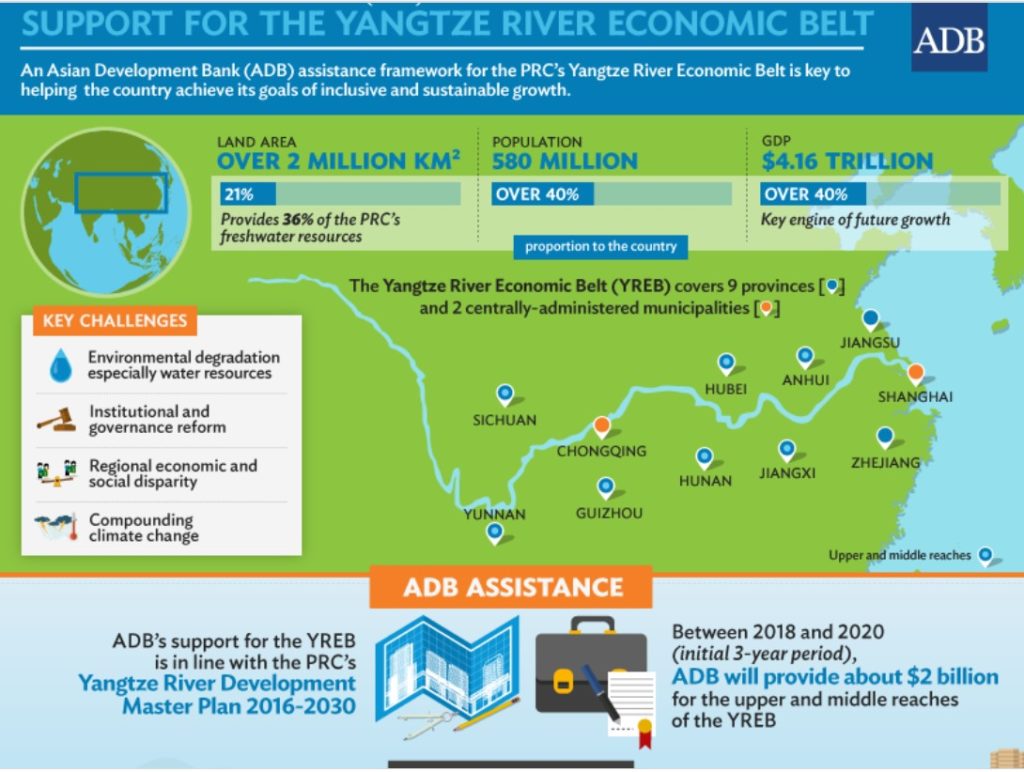
PUTTING THESE TRENDS TOGETHER:
Two divergent trends for 2021 are evident, if one looks at Tibet from Beijing, not only through the eyes of the CCP but of the established elite more broadly, including the security state, and liberal academics who are increasingly discovering much in Tibet that is positive, to be learned from.
Which of these diverging perspectives will succeed is surely a key question for 2021 iron ox year.
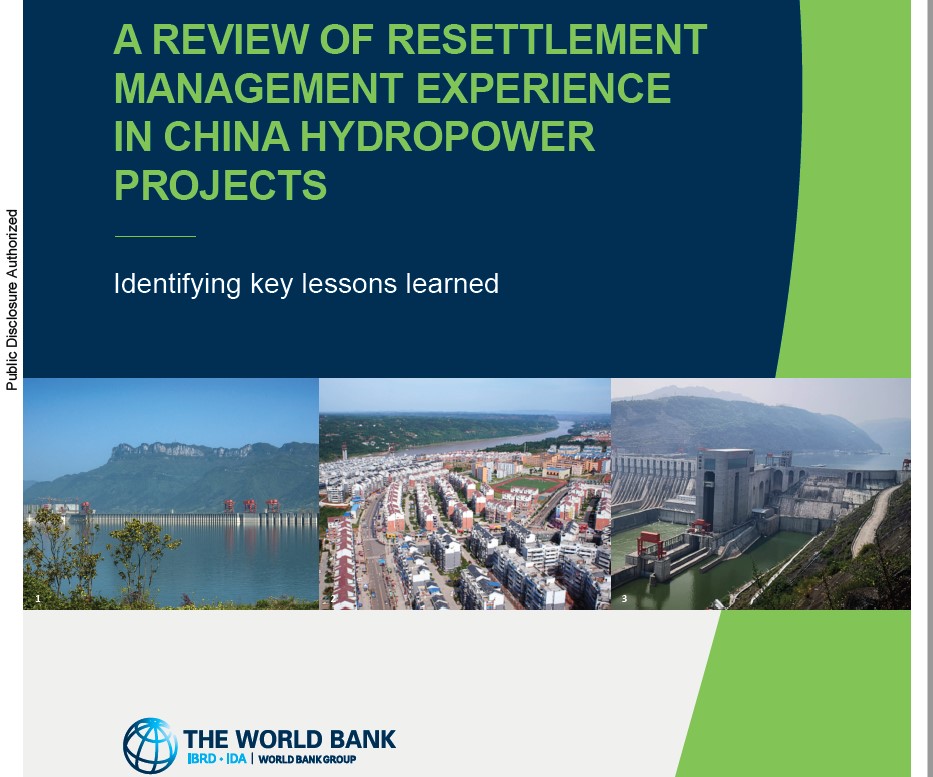
The case study, in this blog series, of legislation to protect the Yangtze, including its Tibetan upper third, from further hydro damming and other threats, is a story of popular and elite pressure, over decades, to insert legislative clauses drastically curtailing further damming.
Article 20 of the Yangtze River Protection Law will go down in history as the protection from damming that so nearly succeeded, and then at the last moment failed enactment. Decades of popular protest at the displacement of tens of millions of Chinese citizens by dams which often failed to perform as expected, aided by elite advocacy as well, produced an Article 20 that reversed the onus of proving a dam is needed. In both the first 2019 draft legislation and its 2020 second draft the text bluntly asserts national power: “The state strengthens the management of the development and utilization of hydropower resources and strictly restricts building of large and medium-sized hydropower projects in the Yangtze River Basin.”
At the very last moment, only five days before this law was enacted, the old guard of red patriotic dam builders won their lobbying campaign, and the key sentence was quietly removed. Prominent in their fightback was the accusation that any such “strict restriction” on further dams would be used to campaign against further damming of the Yarlung Tsangpo.
This victory of Maoist dam engineers against popular revulsion at the high human cost of megadams suggests the security state is winning. This blog looks at the evidence.
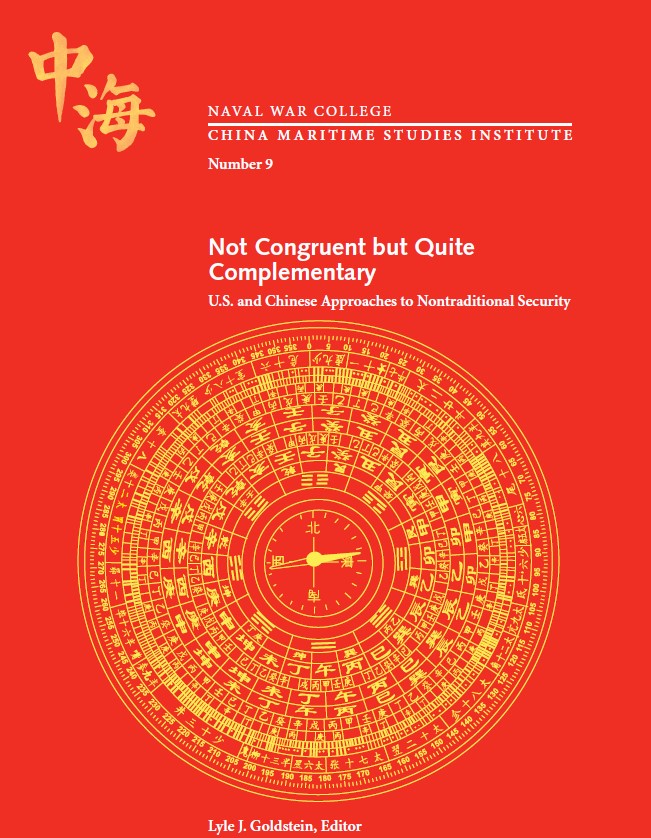
ACCELERATION, SECURITISATION, INTENSIFICATION
Seldom, anywhere worldwide, has a security state claimed China’s mandate to securitise everything. The more power is centralised in the hands of one man, the more the security state extends its power to define all aspects of life as security threats.
The great danger for Tibet is, as in the 1960s and 1970s, everything old, everything Tibetan is classified as security risk that needs rigid and intensive controlling. China’s Minister of State Security said in 2020 that “we are faced with more and more non-traditional security threats. To deal with non-traditional security problems such as economy, culture, society, science and technology, network and biology, we need to make overall plans and comprehensive policies. 同时我们面临的非传统安全威胁越来越多,应对经济、文化、社会、科技、网络 wénhuà, shèhuì, kējì, wǎngluò、生物等非传统安全问题需要统筹兼顾、综合施策.”
The combination of “traditional” security threats and the expanding list of “non-traditional” threats covers just about everything, especially in a remote and recalcitrant frontier zone, which is how the security state has long seen Tibet. In all Tibetan areas, in five Chinese provinces, officials have always found the easiest way to get Beijing to allocate funding is to play up the security threat, while pledging to strike ever harder as long as they are well-resourced.
“Non-traditional security” is yet another concept originating in the US, which China’s massive security state has made its own. Originating in the US deep state’s 1990s post Soviet collapse search for a new mission, a slew of “non-traditional security threats” was added to their remit. Terrorism of course was top of the list, especially after 2001’s 9/11. But “non-traditional” threats could be just about anything. “The idea that everything can become a threat allowed for the inclusion of non-military threats in the field of security studies.”[1]
China has used the concept of “non-traditional security threats” to greatly expand the scope of the security state to now cover just about everything. This heightens the sense of threat party leaders see in all directions, all of which need to be controlled by security state programs, from surveillance to incarceration. The expanding security state picks its quarrels and provokes trouble, and then accuses anyone who disagrees of criminally quarreling. That is how bullies compel compliance.
The American security state has similarly embraced the idea that just about anything can be a security threat, requiring securitisation, with security agencies in charge of the official response. A prime example is viral pandemics originating in Asia, which Western security agencies have had on their radar for at least the past two decades.[2]
When that prediction came true in 2020, the security state -especially in China- was commended for its foresight, and for its ruthless methods of suppression. The security state is strengthened further. In Tibet securitising anything and everything routinely defines any Tibetan dissent as a security threat. The solution is thus to further disempower and silence Tibetans, resulting in ever greater distress among the people, and so the spiral perpetuates itself.
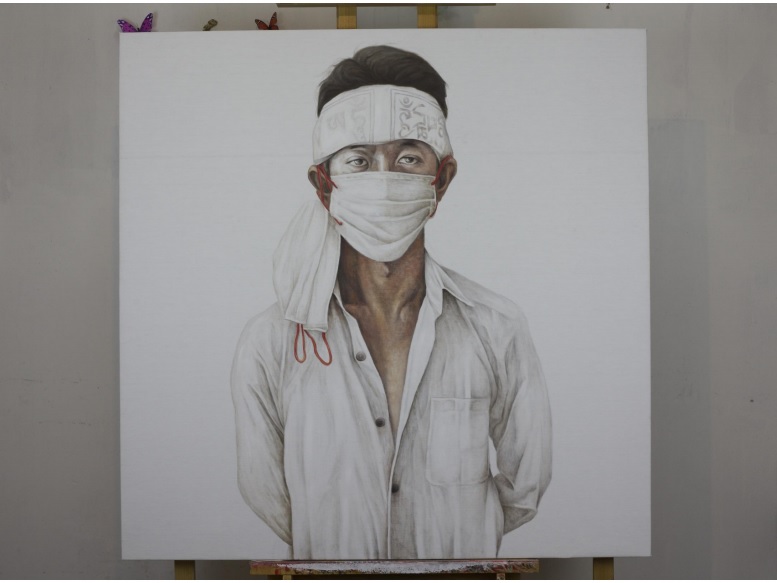
It didn’t have to be this way. The concept of “non-traditional security” can be used to empower marginalised communities, bringing their voices into centre stage by “including health, food, water, natural disasters, internal conflict, forced migration, energy, transnational crime, and cyber security. This inclusive framework ensures that all voices are heard including those oftentimes under-represented and marginalized in society to ensure that academic and policy debates are well informed about the often complex and nuanced nature of these non-traditional security challenges.”[3]
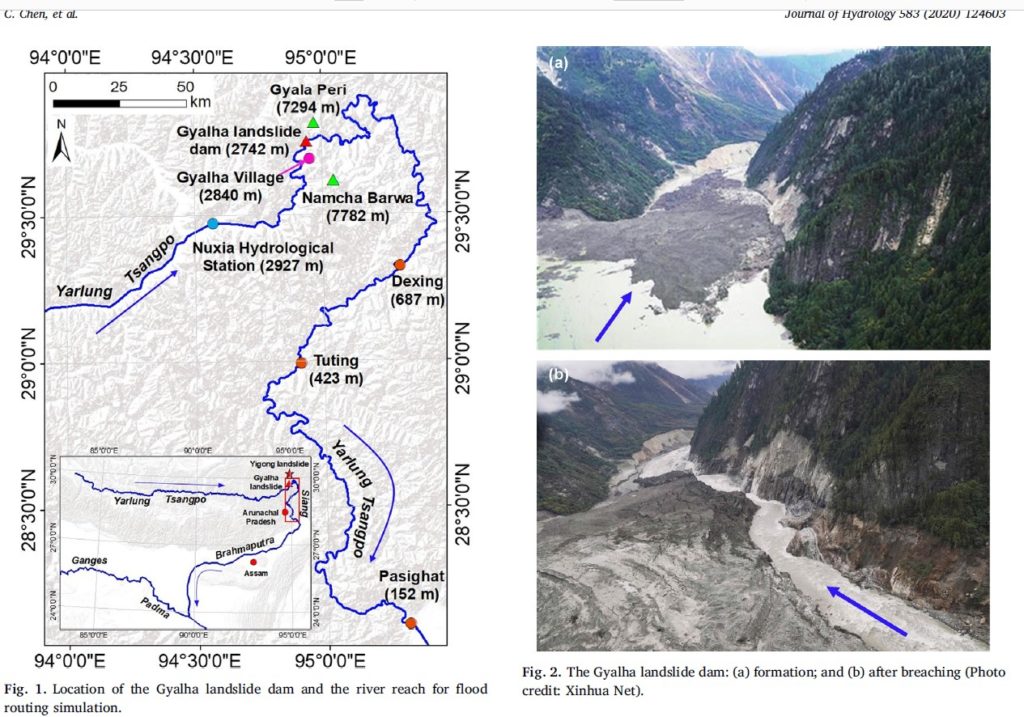
While the security state expands its reach and its grasp, there are other trends in Beijing quietly but steadily pushing in a different direction. There is a growing awareness that hydropower dams are no longer the solution to energy security, compared to investing in the cheaper, safer and more flexible wind and solar power. With hydropower comes coercive resettlement of displaced local communities, and heightened risk of earthquakes and disastrous landslides. In 2018, only a few days apart, massive landslides completely blocked both the upper Yangtze and the Yarlung Tsangpo, until accumulating river flow burst through, greatly alarming downstream communities. Earthquakes and landslides are traditional security threats that can’t be ignored, especially in Tibet. Yet the security state is helpless against such natural forces. [4] Millions of tons of ice, rock and earth avalanched from a mountain peak at 6600 m altitude down into the Yarlung Tsangpo bed over 3 kms below. No security state can stop that; nor can dam builders dare build dams in the Yarlung Tsangpo gorge, when such catastrophic blockages of the Yarlung Tsangpo have happened not only in this time of rapid glacier retreat, but altogether 12 times since 1950.[5]

The era of expensive hydro dams that take many years to build may be starting to fade, at the moment when most sites below the Tibetan Plateau scheduled for damming have been built, and the dam engineers were itching to go upriver. The steepness of wild Tibetan mountain rivers in Kham require the tallest dams ever built, often planned to be over 300m high, if they are to hold enough water to operate beyond the wet summer months. Increasingly, the costs, lead times, expense and risk of collapse add up to risks central leaders are disinclined to do, when wind and solar are cheaper, and the leading manufacturers are national champions that export their tech worldwide.
China’s official December 2020 White Paper on Energy does, in its 50 pages mention hydropower, and the prospects of further damming on the rivers of SW China, meaning Kham. Over decades, Five-Year Plan after Plan announced many such dams, and some were built. But in this White Paper there are no targets, no specifics. By comparison, the 2020 White Paper glows with enthusiasm for solar, wind, nuclear, shale oil, gas, extracting gas from coal, etc. Gradually a shift is under way.
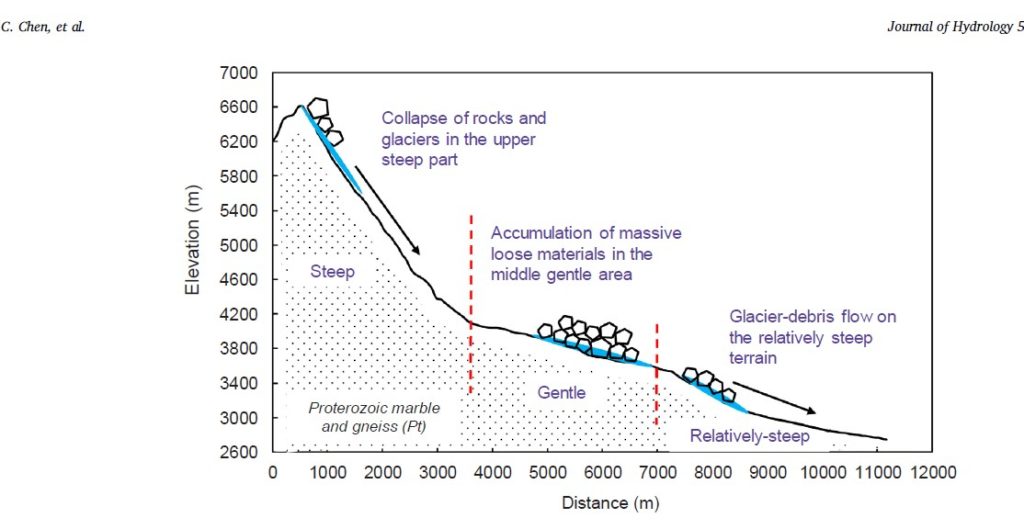
Around the world some governments are reluctant to move away from coal fired electricity generation, on the grounds that coal delivers round the clock and round the year, unlike solar and wind, which are variable. The same is true of hydro, which generates electricity only in the wet season, so much so that predatory industries like blockchain mining and polysilicon production choose to locate close to Tibetan hydro dams that routinely have to abandon much of the electricity they generate, for want of a grid willing to transmit it to distant provinces.
So the old earth gods of Tibet, rumbling their annoyance at being dammed, having to bear the vast weight of concrete and dammed water, may yet shrug aside the dams, and the rivers may yet run free.
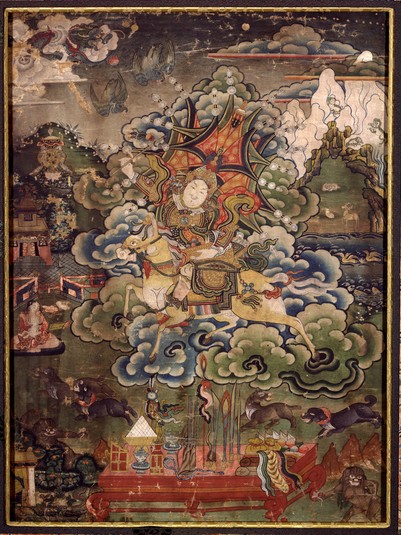
Dralas are elements of reality-water of water, fire of fire, earth of earth. Anything that connects you with the elemental quality of reality, anything that reminds you or the depth of perception. Dralas [are] in the rocks…trees…mountains… a snowflake or a clod of dirt. Whatever is there…those are the Dralas of reality. When you make that connection…you are meeting the Dralas on the spot.
Same goes for the standard official narrative that requires removing nomads from their pastures, in the name of landscape degradation repair, biodiversity conservation and carbon capture. For decades there was a solid consistency of blaming the drogpa nomads for erosion, and declaring erosion a threat to China’s water security. For decades the only solution was to limit or ban grazing, cancel nomad land rights and relocate many to settlements on urban edges, banished from their ancestral landscapes, yet not admitted to the urban economy.
Now that narrative package is coming apart. Grasslands are grasslands because they aren’t wet enough to support forest, or dry enough to be desert. Grasslands can’t be made into big stores of carbon because there is a limit to how much grass can grow, even if grazing is removed. There is almost no evidence that patches of eroding grassland threatens China’s water supply. Above all, Chinese scientists have discovered that the skilful grazing strategies of drogpa actually increase biodiversity, and are good for wild animals too. Slowly it is dawning on official China that moderate grazing, the presence on the land of herds and herders, can go with national parks, protected areas and water security. It is no longer either/or.
Occasionally the contradictions between the propaganda version and ground reality emerge, sometimes because investigative journalism in remote Tibetan areas lives on, when done by official media, with surprising results.
DEEP ELITE POLICY CONFLICTS
At a high level among established elites in Beijing, policies suitable for the Tibetan Plateau are (discreetly) more widely debated than we have seen in quite a while.
In a system where huge landscapes are zoned either ecological or economic, those two competing, mutually exclusive categories are increasingly clashing.
On one hand, China’s renewed emphasis on domestic production (and consumption) means Tibet too is expected to pull its weight by producing what China needs, also feeding Han China’s consumption cravings by offering vast depopulated pastoral landscapes as virgin, pristine wilderness for mass tourism. Looked at that way, both the prefectures and counties zoned economic and those zoned ecological end up serving economic growth, whether in primary industry (pastoralism), secondary industry (mineral extraction and processing) or tertiary (tourism management).
However rigidity of the zoning system creates tensions, most notably in Amdo and Kham. Elite debate is divided on the potential for Tibetan pastoral landscapes to satisfy newly wealthy China’s craving for meat, especially as pig populations struggle to recover after a devastating virus pandemic. In Golok and Yushu prefectures the future could be implementation of the plan to intensify meat production; or the zoning, as planned, of the entire prefectures (and beyond) as national park, with water production for lowland use prioritised above all else.
Either way, the Tibetan Plateau is seen as a producer, that must at last pay its way, whether the product is water and hydroelectricity; or meat. The number of nomads displaced from their pastures depends on the outcome of this elite contention.
Until very recently it seemed clear rewilding Tibet into pristine wilderness, largely devoid of livestock producers, was winning the debate. China submitted to the global ProtectedPlanet database its map of the whole of Yushu and Golog, and several more counties too, as the Sanjiangyuan (Three River Source) National Park, covering 363,000 sq kms, bigger than Germany. Three years ago that map disappeared from the UN ProtectedPlanet maps, and it now seems the Sanjiangyuan National Park has been dramatically downscaled to 121,000 sq kms.

These lands are prime pasture, as well as headwaters of the Yellow (Ma Chu), Yangtze (Dri Chu) and Mekong (Za Chu). Until very recently the abundance of the alpine meadows was that the consequence of bounteous summer monsoon rains, land and water went together, interwoven. But at the highest level, at least 20 years ago, China decided water was by far the most important environmental service Tibet provides to China, and nomads were a threat to it.
Now that consensus is crumbling, as evidence mounts that nomads are sustainable stewards of their landscapes, and that their customary grazing regimes, based on nomadic mobility, were good for biodiversity. The blame game, attributing pasture degradation to stupid, uncaring, ignorant nomads is at last fading. Official policy is at last starting to shift. The blame game is fading. China is belatedly discovering Tibetan nomads are skilful curators of huge landscapes. China seems to be discovering it wants Tibetan water, livestock products and carbon capture and national parks, all in the same (vast) Tibetan landscapes. Until now, on the simplistic Marxist dialectic assumption that “there is a contradiction between grass and animals”, those choices have been mutually exclusive.
Now China seems to be gradually discovering it can actually have water, livestock, carbon capture and protected areas, all without widespread removal of nomads, except in the most degraded areas. Signs of a relaxation in stigmatising the drogpa nomads are emerging, notably in the dramatic scaling back of the Sanjiangyuan to only one third of its original size, leaving plenty of room for herds and herders. Skilful grazing does not, after all, cause degradation, and is good for biodiversity, flourishing herbal medicines and wildlife.[6] For China, these are new awakenings to what Tibetans have always known.
In part this is a groundswell, as Han tourists discover, to their surprise, most Tibetans are nice, considerate folks who do care a lot about long term consequences of what they do. In part this is elite debate among scientists who are discovering the complexity of pastoral landscapes curated by mobile herds and herders, seldom to be blamed for areas of black soil.
While there are promising indications of an elite rethink, everything (as usual) depends on whether the securitisation of everything will override these considerations. If Tibet is securitised, yet again, then we are back to intensive surveillance, institutionalised suspicious mindsets, grid management or, even worse, mass incarceration of a newly created rural proletariat of displaced nomads, trained Xinjiang style to become factory workers.
All of these outcomes are possible. If the security state sweeps aside all dawning recognitions of the skills of rural Tibetans, it won’t be the first time.
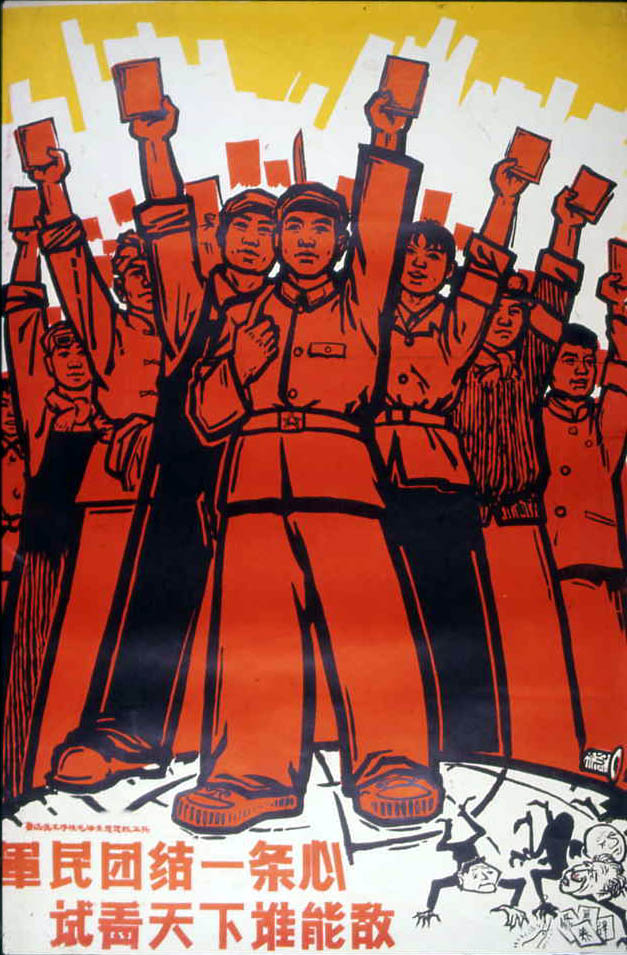
ELITE ENERGY CONTENTION
The other big elite debate is about China’s future energy supply, and Tibet’s role in it. What Tibetans most fear is more hydrodams and high voltage power grids to transmit the electricity thousands of kms far to the east. The easier dams below Tibet, on the Yellow, Yangtze and Mekong are largely built, and the engineers have plans ready for dams upriver, in the rugged terrain of Kham Kandze and Amdo Ngawa. But will they be built? Until quite recently, this seemed inevitable, it was just a matter of time. But now it is cheaper, quicker and more flexible to instead build solar and wind power, often in Tibet, often connecting to existing ultra high voltage grids. So will the 14th Five-Year Plan name the dams to be built?
Hydro is increasingly looking like a sunset industry, despite its political power as a nation-builder. Not only are solar and hydro competing with hydro in construction costs, these are sunrise industries with central subsidies and support as national champions for global export and global manufacturing domination.
Securitisation cannot bring back hydro, even if it manages to redefine Tibet as a high security risk. Hydro power is itself insecure, in two ways. First it is highly seasonal in Tibet, peaking in summer, barely able to generate electricity in the cold of winter. Second, so many dams, especially in geologically active areas such as Tibet, have been insecure, triggering earthquakes and landslides, collapses and cracking walls almost impossible to repair without draining the dam and starting again. Then there is the problem of siltation filling dams with sediment instead of water. Gradually, China’s enthusiasm for dams is dissipating, as solar and wind take over.
Gradual is key. The dam builders are a powerful lobby. They are big state-owned corporations with high level connections. They were for years praised as model workers, heroes of socialist construction, pioneers of planting China’s flag on remote landscapes, back in the day when most of the CCP Politburo Standing Committee were trained as hydro engineers. Their clout going forward is considerable, as many ultra-high voltage direct current (UHVDC) power grids to transmit electricity across China, from Tibet to the east coast, are already built, in anticipation of further hydro dam construction.
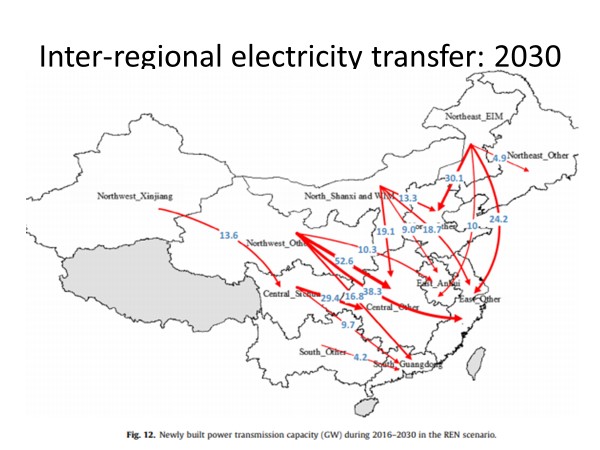
Yet, in the 13th Five-Year Plan period now ending, hydro dam construction investment stalled, at a time just about any other energy source (including coal as well as renewables) surged ahead. When the hydro engineers get together with their buddies, it still sounds like the old days, full of confident rhetoric that hydro solves everything, but the megaproject era is dwindling.
Some more dams may yet be built in Tibet, but not many. This does not at all mean Tibet can escape becoming a massive energy extraction zone. What it means is that central planners are moving on, now reimagining the Tibetan Plateau as a boundless source of solar and wind power, often plugged into the same UHVDC power grids meant to bind Tibet to lowland China. Nor has China forgotten its even grander plans to generate so much electricity from Tibet to export not only eastward but also westward, possibly as far as Europe.
TIBET AS LABORATORY
A favourite word of central planners is “demonstration”. Building the biggest demonstration base showcasing hydro and/or wind and solar; always the biggest. Mega hydro projects may be fading, but the mega mentality persists, not only as a way of getting Beijing to allocate funding, but as a way of demonstrating China’s technical capabilities to client states around the world. Sales ensue.
UHVDC power grids are also part of China’s global sales pitch, and new long distance grids continue to be constructed. It took two decades for China to build nine medium and big hydro dams on the Ma Chu/Yellow River in Amdo, essential to the many industries processing Tibetan oil, gas, lithium and other minerals. Those nine dams produce more than local demand requires, and there is now a UHVDC grid from the Amdo dams stretching 1600 kms to Henan province in central China 青海-河. The cost to central leaders is well over USD$3 billion, with construction starting late 2018, due for completion early 2021. From Henan Zhumadian, electricity from Amdo may well be transmitted even further, to the 10 million people of Henan Nanyang. Tibet is being woven inextricably into the fabric of China. Nobody asked the Tibetans.
As usual, this is a project of State Grid, one of the biggest of global corporations. In 2012 the Fortune 500 ranking of the world’s biggest corporations rated State Grid as #7 worldwide, and by 2017 #3. Late in 2020 State Grid boss Mao Weiming was promoted to Governor of Hunan province.
As usual, it relies on the Swiss/Swedish company ABB for the crucial specialist transformers that convert AC alternating current to DC for long distance transmission, and at the other end, back to AC. Taking the most direct route, the power pylons march across protected panda habitat in the Qinling Mountains, after passing over supposedly uninhabited parts of Gansu. The electricity delivered to Henan is sufficient for eight million people, more than the total number of Tibetans. Tibet has become a major energy exporter, of oil and gas from the Tsaidam basin for several decades, now hydroelectricity. Nobody asked the Tibetans.
As the challenging 2020 rat year fades and a wood iron ox year beckons, China, in its own best interests, could try some nyi-shu-gu purification of old securitisation thinking, to drop the suspicious mindset typical of securitism, opening up room for taming and enlightening the mind of the ox and oxherder.
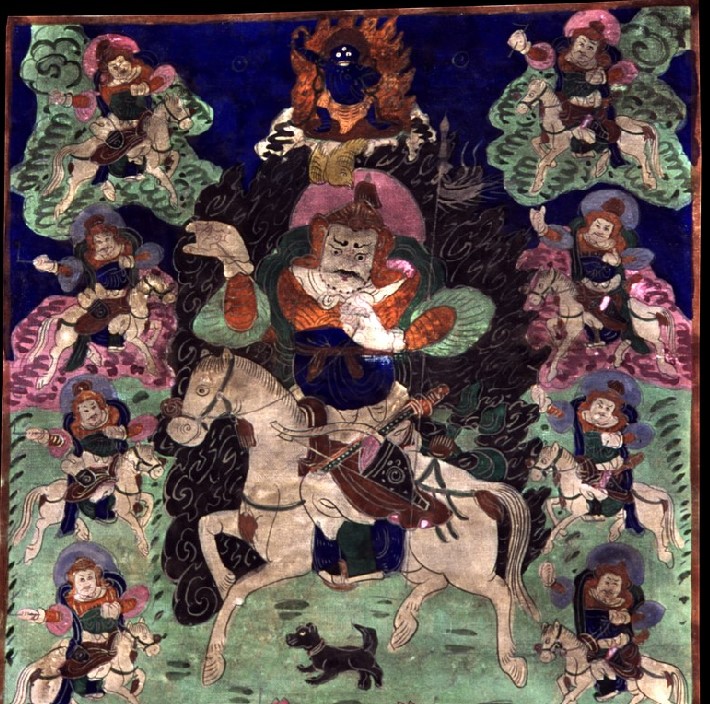
[1] Andrea Ghiselli, Diplomatic Opportunities and Rising Threats: The Expanding Role of Non-Traditional Security in Chinese Foreign and Security Policy, Journal of Contemporary China, 2018 VOL. 27, NO . 112, 611–625
[2] Satoko Otsu, An Overview of Pandemic Preparedness in the Western Pacific Region, in PANDEMIC PREPAREDNESS IN ASIA, S. Rajaratnam School of International Studies (2009) Singapore.
[3] Caballero-Anthony, Mely and Cook, Alistair D.B., Non-Traditional Security in Asia : Issues, Challenges and Framework for Action. Yusof Ishak Institute, Institute for Southeast Asian Studies, 2013.
[4] Chen Chen et al., Barrier lake bursting and flood routing in the Yarlung Tsangpo Grand Canyon in October 2018, Journal of Hydrology, 583 (2020) 124603
[5] Barrier lake bursting and flood routing, 2020, table 2
[6] Zi-Qiang Yuan, et al., Vegetation and soil covariation, not grazing exclusion, control soil organic carbon and nitrogen in density fractions of alpine meadows in a Tibetan permafrost region, Catena, 196 (2021) 104832
Wang, Luolin Zhu Ling,. Breaking Out of the Poverty Trap : Case Studies from the Tibetan Plateau in Yunnan, Qinghai and Gansu, edited by Ling Zhu, World Century Publishing Corporation, 2013.